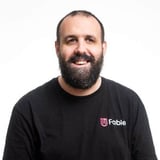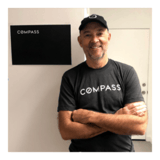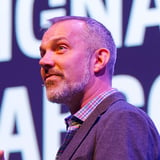Summary
As UX researchers, you already know that including people with disabilities in your research isn’t just about accessibility, it’s about unlocking innovation. But what does that look like in practice? And what happens when inclusive design is left out? In this session, Samuel Proulx, Accessibility Evangelist at Fable, will take you beyond theory and into the real-world impact of inclusive research. Through compelling examples, like how people with disabilities forever changed the way we read, or how a lack of inclusive input led to autocorrects embarrassing (and sometimes harmful) errors, you’ll see how accessibility-driven insights shape the products we use every day. Whether you’re refining your research methods or making the case for inclusive design in your organization, this session will equip you with actionable strategies to ensure your work leads to products that don’t just meet compliance, they change the game. Join us to learn how accessibility fuels innovation, and how you can be part of it.
Key Insights
-
•
People with disabilities represent a diverse and growing user base including physical, sensory, cognitive challenges, and aging populations.
-
•
Audiobooks originated from the blind community’s need and sparked complex questions about what constitutes 'reading' and who should narrate.
-
•
The early iteration of audiobooks emphasized straight, uninflected reading, whereas today’s versions employ expressive narration.
-
•
Autocorrect was originally invented at MIT to address cognitive challenges but had a major flaw due to focus on a single user’s patterns.
-
•
Despite decades of development, autocorrect frequently fails to accommodate non-Western names, further marginalizing diverse users.
-
•
The touchscreen’s modern multi-finger gestures were invented by researchers designing for people with disabilities, not the general market.
-
•
Finger Works’ innovations like pinch-to-zoom and multi-finger swipe directly influenced Apple’s iPhone UI.
-
•
Early touchscreen devices suffered from 'gorilla arm' fatigue, showing the need for ergonomic research rooted in real user needs.
-
•
Research should be conducted with people with disabilities to leverage their lived expertise and avoid misguided assumptions.
-
•
Accessibility is both an ethical mandate and a significant untapped market opportunity waiting to be unlocked.
Notable Quotes
"The mother of invention is necessity originally said by William Horman in 1519."
"If you think about the baby boomer generation, they are getting older, but their reliance on technology is not decreasing."
"May I ask you what you think of printing books for the blind on phonograph records?"
"For those of us who are blind, braille is very costly to make, bulky, and slow to read compared to audio."
"DWI should stand for damn Warren's infertile machine because it was designed on Warren’s typos to solve Warren’s problem."
"41 percent of non-Western names are autocorrected into something else."
"Early touchscreen technology was considered useless and suffered from gorilla arm fatigue."
"John Elias and Wayne Westerman founded Finger Works to create technology useful for people with repetitive strain injury."
"Research with people with disabilities is about finding solutions with us, not for us."
"When you tap into the expertise that people with disabilities have developed over lifetimes, you will find problems to solve and solutions to use."
Or choose a question:
















More Videos

"By default, you’re getting I am very confident of my answers."
Trisha Causley[Demo] Complexity in disguise: Crafting experiences for generative AI features
June 5, 2024

"It is impossible for one research ops person to do all the things expected in job descriptions."
Kate TowseyAsk Me Anything (AMA) with Kate Towsey
April 2, 2025

"You need to be laser-focused as ops people—we get asked to do too many things otherwise."
Briana Thomas Christina RodriguezWhen Design Ops Comes in H.O.T. : A Tale of a Transformed Design Org
September 30, 2021

"I work in an organization where its leaders don’t understand design and don’t value it. It just doesn’t get resourced."
Brianna SylverLead With Purpose
March 31, 2020

"I’m drowning trying to create an understanding of our target audience for a new feature, but that leaves me no time for usability updates."
Anna Poznyakov Richa PrajapatiGet The Most Out Of Stakeholder Collaboration—and Maximize Your Research Impact
March 12, 2021

"A seat at the table versus building the table means setting routines where all the right partners come together regularly."
Frank DuranPartnership Playbook: Lessons Learned in Effective Partnership
January 8, 2024

"Designing for the real world means dealing with practical constraints and making refinements in the face of compromise."
Craig VillamorResilient Enterprise Design
June 8, 2017

"Once I got my foot in the door, the biggest challenge was learning the vocabulary and culture."
Rachel Radway Katie Bingham Joe WiertelThe Many Paths Of Design Operations
September 8, 2022

"If you’re a product manager, you don’t do very much design work anymore; you care about it but step away from the Figma."
Christian CrumlishAMA with Christian Crumlish, author of Product Management for UX People
March 24, 2022
Latest Books All books
Dig deeper with the Rosenbot
How can metrics like the Accessible Usability Scale be used post-launch to improve accessibility?
How can AI enable product managers and designers to participate more effectively in research and prototyping?
What trends are emerging regarding the disappearance or evolution of the experience architect role within UX and service design?
















